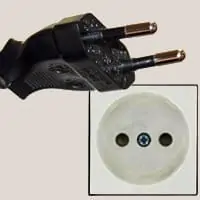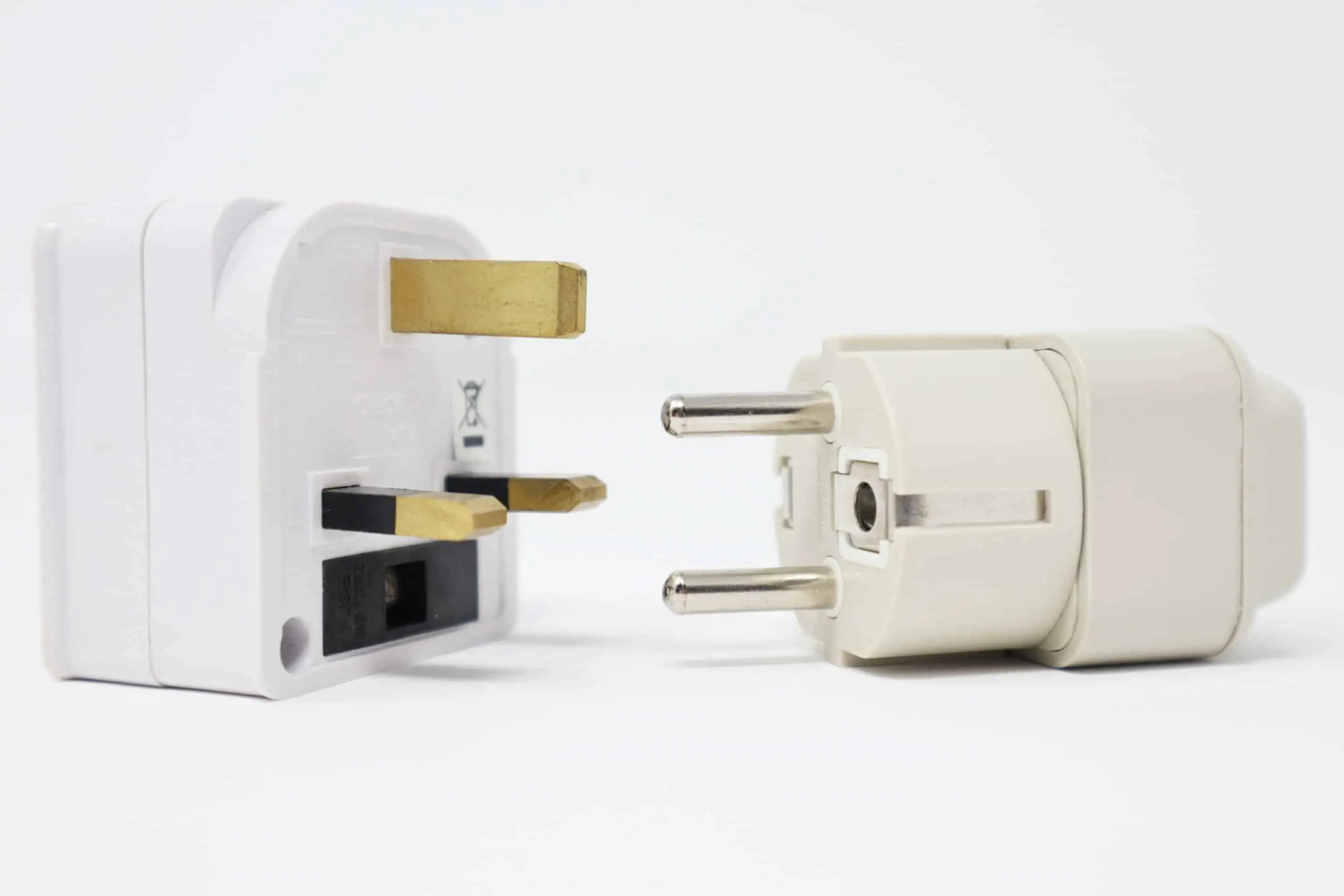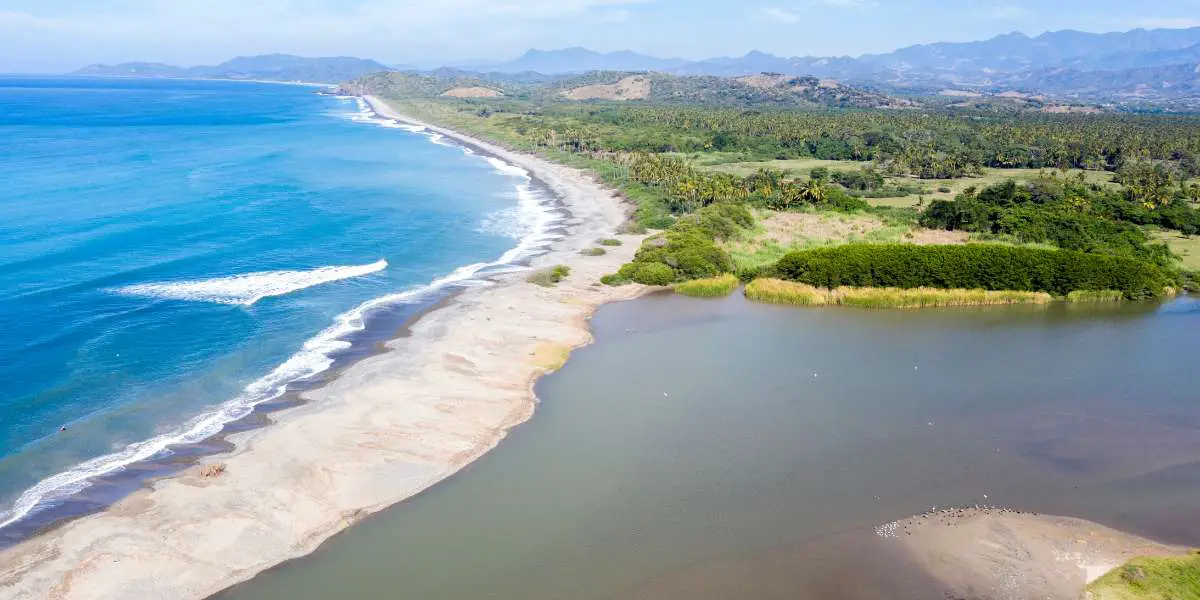You are planning on traveling from your home in the US to Thailand. You have packed all your clothes, shoes, a passport, and other necessities. However, once you start packing your electronics, you realize that the Thailand power sockets must be completely different from the ones in the US. So, now you need an adapter.
What type of adapter do I need to use in Thailand? When visiting Thailand, you will need a travel adapter capable of connecting plug Types A and B to plugs Type C. Additionally, you need to make sure your device and/or charger can handle the high voltage of outlets in Thailand, which have almost twice the voltage as US outlets.
With that being said, there are many reasons why an adapter is necessary to have while you’re in Thailand, despite North America and Thailand having plug Type A and B in common. Other factors, such as voltage and frequency, are also important to take into consideration.
You can read our guide on being an Expat in Thailand here.
Booking.comWhy Thailand Uses Different Power Sockets & Plugs
Thailand has had many influences from foreign countries, including European countries like France and Britain, and the United States. One of the things the US has in common with Thailand is our technological developments, such as how we use electricity.
Throughout the early development of Thailand’s power grid, they decided to use the European Type C plug, in addition to North American Types A and B. The same applies to many other countries around the world.
 |  |  |
- Plug Type A is the typical North American plug with two flat, vertical, parallel pins.
- Plug Type B is just like A, with the exception that it has a cylindrical pin below the two parallel pins (commonly found in North America too).
- Plug Type C consists of two parallel, cylindrical pins, and it is found across most of Europe (except the UK) and some parts of Asia, like Thailand.
Thailand also uses plugs Type E, F, and O (which is unique to Thailand). However, all of these outlets are compatible with Type C plugs.
You can find Type A’s in one place, Type B’s at another, and Type C’s in yet another location. Therefore, you can’t really know what type of outlet to expect when traveling. Although Type B’s are a little rarer in Thailand, it is vital to be able to adapt your devices to each available; this is where a travel adapter comes into play.

What Type of Adapter Do You Need for Thailand?
As previously stated, Thailand has outlet Types A, B, C, E, F, and O (But remember, C plugs work for E, F, and O outlets). Assuming that you live in a North American country with plug Types A and B, then you will need a travel adapter that is capable of converting plugs A and B to a Type C plug; this is known as a European Travel Plug Adapter.
3 Best Plug Adapters for Overseas Travel
The following is a list with three of the best European Travel Plug Adapters available on Amazon:
1. VINTAR International Power Adaptor with 2 USB Ports

The VINTAR International Power Adaptor comes in two different packs: Two for $16.98 or three for $21.96. The VINTAR has an ultra-light design, making it perfect for carrying with you in your travels across countries with Type C outlets. It also includes two built-in USB ports for devices such as cell phone chargers. It has two North American outlets for connecting multiple devices at once.
2. BOKHOM 6 in 1 Universal Plug Adapter

The BOKHOM 6-in-1 Universal Plug Adapter comes in at a price of $26.99, making them extremely economical for traveling with multiple devices or people. The adaptor is small and compact, making it ideal for storing in a carry-on, and it includes two American outlets to plug two different devices to each adapter.
3. SAUNORCH Universal International Travel Power Adapter

Last but not least, the SAUNORCH Universal International Travel Power Adapter is sold individually for $28.99. It can adapt to the correct electrical plug for over 150 countries across the world. Each outlet can be selected with a very simple system by using the sliders on the side of the adapter.
It also includes an astonishing four USB outlets, making it ideal for charging multiple cell phones for your family and friends at the same time.
The Ceptics adaptor includes safety features, such as fireproof material, and a built-in safety fuse that can be replaced with the spare fuse that comes with it.
*
It is important to note that none of the adapters mentioned above function as a converter or transformer for voltage or frequency. Always make sure your device is ready for a different voltage.
A Note on Voltage & Frequency Differences
Now you have your travel adapter and are ready to face any type of outlet that Thailand presents you with. However, you are not out of the woods yet. You should still be knowledgeable about the different voltages and frequencies present in Thailand’s electrical systems, so you don’t overburden your devices.
Voltage
Power grids in different countries vary from one another; this is mostly due to differences that had emerged among countries first starting their power grids. They can be high or low, and sadly, Thailand is on the list of countries with very high voltages.
Thailand’s power grid (230volts) has almost twice the voltage of the US (120volts); this can be harmful not only to your device but also for you. If your device cannot handle the voltage, then the best-case scenario is that your device will be fried and stop working altogether.
The way to efficiently deal with higher voltages is either to get a voltage converter that can scale down the voltage for your device to handle, but this is only useful if you plan on using the device for one or two hours. A voltage transformer, on the other hand, can keep devices going for longer. However, both options tend to be quite heavy to carry around and pack.
A much more economical and safer way of dealing with voltage differences is by taking a closer look at the label of your device or charger and making sure that it is, in fact, capable of withstanding Thailand’s higher voltage.
Some devices, such as cell phone or laptop chargers, are capable of adapting themselves to different voltages, but once again, make sure to check if it is capable of surviving. Better safe than sorry.
Frequency
Frequency is not as huge of a deal as voltage. Your device will not explode if its frequency requirement differs from that of Thailand power sockets, which is about 50Hz. (The US frequency standard is 60Hz, so your device most likely differs from that of Thailand.) However, it is still not advisable to use your device unless absolutely necessary.
Once again, nothing terrible will happen if your device has a different frequency. However, devices with moving parts such as clocks or blenders will operate slower than usual. A converter or a transformer is an excellent way to deal with the frequency difference between your device and another made in Thailand.
However, a far more effective way, just as with voltage, is to carefully check if your device is capable of withstanding both North American and Thailand’s frequency. Most cell phone and laptop chargers are capable of handling both voltages.
Are There any Alternatives to an Adapter?
If you are a North American tourist traveling to Thailand, then your alternatives are very limited. You could try just bringing in your Type A or B plug and hope that you find a suitable plug there (which you will, just that not that often).
Another alternative would be to purchase a charger with a compatible plug for Thailand power sockets. That way, you can plug the device in without needing an adapter. However, the adapter tends to be a cheaper choice, and a lot more efficient if you plan on using more than one device or traveling to other Eastern countries.
Other than that, there aren’t really any more options to secure your device’s survival in Thailand without an adapter.
In Summary
The US is a unique country when it comes to many things, such as its measuring system, its power plugs, and its voltage and frequency, which is why it comes as no surprise that an adapter could be vital to your device’s survival.
Thailand uses plug Types A, B, and C (which is compatible with E, F, and O also found in Thailand) while the US and the rest of North America use plugs A and B. A European Travel Plug Adapter will be ideal for you.
Thailand has a voltage that is almost twice as high (230V) as the one used in the US (120V)—not having a device that is capable of handling this much voltage, or a converter or transformer can prove fatal for your device and cause serious harm to the user.
Frequency in Thailand (50Hz) is slightly different than that from the US (60Hz). The difference in this measure is not as huge of a deal as with voltage. However, an appliance with moving parts will be affected. Frequency can be dealt with in the same way as with voltage. Ultimately, the most efficient way of dealing with both voltage and frequency is to check that your device or its charger can withstand the voltage and frequency difference between Thailand and North America.





